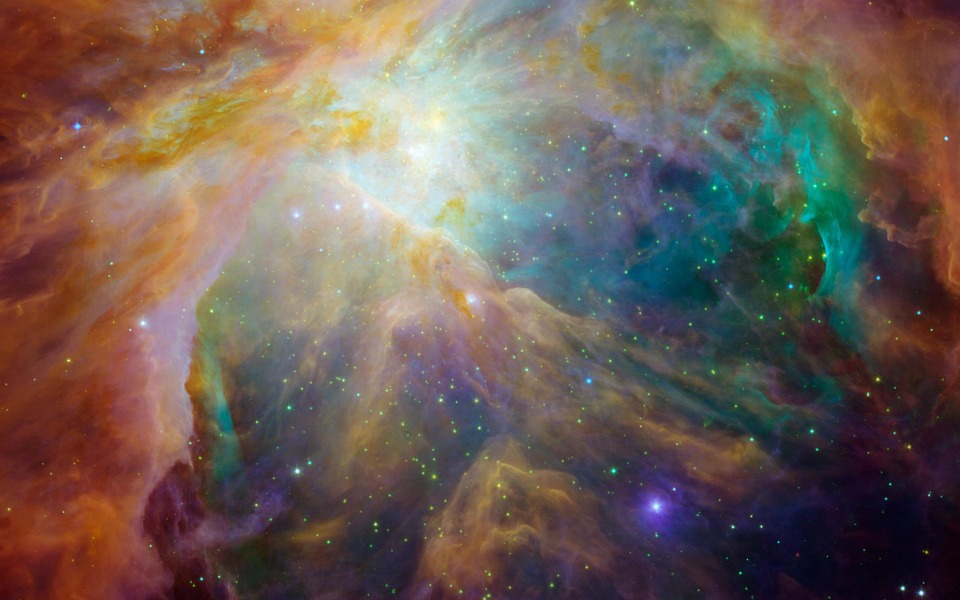The Hubble Space Telescope continues photographing the stunning phenomenon that occurs in space. Recently, the telescope snapped what may appear to be a “monster star” that was spewing so much light and radiation.
Express reports that the Hubble photographed a “monster star” also known as Herschel 36, found in the Lagoon Nebula around 4,000 light-years away from Earth. Herschel 36 is referred to as a monster star as it shines 200,000 times brighter than the sun and weighs 32 times more. The star’s brightness is to the extent that normal binoculars or telescopes can be able to pick it up.
“At the center of the photo, a monster young star 200,000 times brighter than our Sun is blasting powerful ultraviolet radiation and hurricane-like stellar winds, carving out a fantasy landscape of ridges, cavities, and mountains of gas and dust. The mayhem is happening in the heart of the Lagoon Nebula, a vast stellar nursery located 4,000 light-years away and visible in binoculars simply as a smudge of light with a bright core,” said NASA.
The agency continues to describe Herschel 36 as coming out of its “cocoon” and blasting radiation. Astronomers have since studied Herschel 36 after it made holes into the surrounding cloud. According to NASA, the star is quite young at one million years old which explains why it is so active and it may live on for another five million years. “In comparison, our smaller Sun is five billion years old and will live another five billion years.”
Meanwhile, many space enthusiasts and astronomers in the West have noticed the presence of Venus in the sky. At the moment, Venus is one of the brightest celestial objects and this time of year, the planet is known as the evening star. However, it has also been referred to as a morning star because it could be seen from sunrise until it begins to disappear throughout the day at certain times of the year.
According to astronomer Dave Eagle, Venus is currently moving towards Earth, glowing brighter and brighter over time. As it grows brighter and moves closer, the planet’s Earth-facing side changes, turning from a fully-lit planet to a sliver of light.



 Senate Sets December 8 Vote on Trump’s NASA Nominee Jared Isaacman
Senate Sets December 8 Vote on Trump’s NASA Nominee Jared Isaacman  Lost in space: MethaneSat failed just as NZ was to take over mission control – here’s what we need to know now
Lost in space: MethaneSat failed just as NZ was to take over mission control – here’s what we need to know now  Astronomers have discovered another puzzling interstellar object − this third one is big, bright and fast
Astronomers have discovered another puzzling interstellar object − this third one is big, bright and fast  Neuralink Expands Brain Implant Trials with 12 Global Patients
Neuralink Expands Brain Implant Trials with 12 Global Patients  Trump Administration to Launch Autism Initiatives Targeting Acetaminophen Use and New Treatment Options
Trump Administration to Launch Autism Initiatives Targeting Acetaminophen Use and New Treatment Options  Eli Lilly’s Inluriyo Gains FDA Approval for Advanced Breast Cancer Treatment
Eli Lilly’s Inluriyo Gains FDA Approval for Advanced Breast Cancer Treatment  CDC Vaccine Review Sparks Controversy Over Thimerosal Study Citation
CDC Vaccine Review Sparks Controversy Over Thimerosal Study Citation  Trump Signs Executive Order to Boost AI Research in Childhood Cancer
Trump Signs Executive Order to Boost AI Research in Childhood Cancer  NASA Astronauts Wilmore and Williams Recover After Boeing Starliner Delay
NASA Astronauts Wilmore and Williams Recover After Boeing Starliner Delay  Trump and Merck KGaA Partner to Slash IVF Drug Costs and Expand Fertility Coverage
Trump and Merck KGaA Partner to Slash IVF Drug Costs and Expand Fertility Coverage  Neuren Pharmaceuticals Surges on U.S. Patent Win for Rare Disorder Drug
Neuren Pharmaceuticals Surges on U.S. Patent Win for Rare Disorder Drug  SpaceX Starship Test Flight Reaches New Heights but Ends in Setback
SpaceX Starship Test Flight Reaches New Heights but Ends in Setback  Cogent Biosciences Soars 120% on Breakthrough Phase 3 Results for Bezuclastinib in GIST Treatment
Cogent Biosciences Soars 120% on Breakthrough Phase 3 Results for Bezuclastinib in GIST Treatment 































